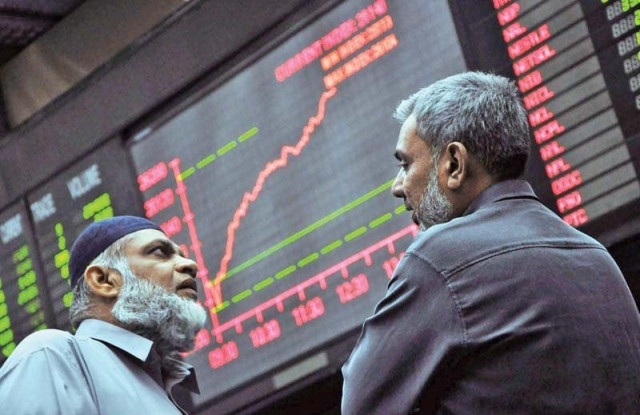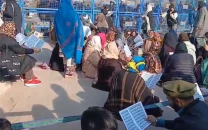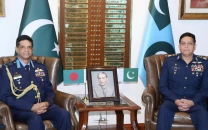MSCI reclassification: Has the stock exchange become more vulnerable?
With massive inflow of foreign funds in secondary market, Pakistan now more susceptible to crashes

Foreign funds would divert their liquidity into buying Pakistan’s stocks. This would merely increases prices of shares and be profitable for those who already hold stocks. PHOTO: FILE
There is a grain of truth in all these narrations, but it conceals much than it reveals. Let us take a dispassionate look at the underlying dynamics of this reclassification and its benefits to our economy.
'Pakistan to receive up to $500 million post MSCI re-classification'
History
MSCI maintains three indices for stock markets from developing countries, namely, emerging market, frontier market and stand-alone.
In 1994, during the second tenure of the PPP government, Pakistan was included in the MSCI Index for emerging markets. Pakistan maintained its emerging market status for 14 years, during which the stock market witnessed various crises. Freezing of foreign exchange accounts in 1998 and liquidity crunch in 2005 were among the more chronic crises in the duration.
However, MSCI never reclassified Pakistan. Not until 2008, during the third PPP government, when Karachi stock exchange underwent market closure. The closure was a rather hasty move, it smacked of desperation as the government felt helpless in the face of market crash. The market fell 55% in the last five months leading to the fateful August of 2008. On August 20 government declared a ‘floor’ – thereby stunting all market operations for 108 days. This was a cardinal sin in free market doctrine.
MSCI swiftly shunted out Pakistan from emerging market status to the stand-alone category. Within a year, Pakistan was promoted to frontier market status. And after subsisting there for eight years, the good news was broken to us – we finally reclaimed our rightful place in the comity of emerging markets. And obviously all the right reasons are quoted for this auspicious happening - good governance, political stability, stock market reforms, rising index, investor confidence, so on and so forth.
Pakistan upgraded to emerging markets status
The flip side
But nobody cares to mention the conduct of the so-called robust foreign funds in the time of crisis during the 14 years that Pakistan was part of the MSCI emerging market index. This “hot money” of foreign portfolio investment contributed to make the market swing all the more violent, resulting in more market crashes, just as is the case with any other market.
In order to understand how the ‘hot money’ contributes to the market crashes, a crucial distinction between two segments of stock market needs to be made – primary and secondary. The primary segment comprises of fund raising by floating shares (in the shape of Initial Public Offering for instant) to finance a business expansion, or some business activity. The secondary segment on the other hand merely comprises of an exchange where shares merely change hands.
Now, the foreign investment that the government keeps mentioning would occur in the secondary market. Foreign funds would divert their liquidity into buying Pakistan’s stocks. This would merely increases prices of shares and be profitable for those who already hold stocks. On the flip side, since Pakistan merely comprises a fraction of investment for these funds, any hint of a bearish trend would mean they would swiftly liquidate their investment, translating into a momentous crash due to sudden drying up of liquidity in Pakistan’s exchange.
Investment we need
Unfortunately, as far as the primary segment is concerned, Pakistan’s stock market has been unable to properly function as a conduit to finance new business projects and companies. For instance, as recently as 2015, only eight new companies were listed in Karachi Stock Exchange, whereas 72 companies were listed in National Stock Exchange of India during the same period.
Three Pakistan companies upgraded on investors’ radar
Maximum oversubscription for a company in Karachi Stock Exchange was 3.4 times. Whereas, 10 to 20 times oversubscription is common in India’s retail segment.
This leads to the other chronic ill that plagues our stock market - surprisingly low retail investor base. With a retail investor base of around 200,000; it makes up just 0.1% of our population. One needs guts to say that stock market benefits large population of our country. This ratio of retail investors to population stands at 2% for India, 10% for China and 18% for USA.
This is indeed the reason for the low interest of general populace in the historical rise of Pakistan stock market. When they have no stake in its benefits, why should they watch all these shenanigans? With low demand, private TV channels in Pakistan have stopped showing stock market related programs long time back. And they are not reversing their decision on these historical happenings.
We also need to correct this fallacy claim regarding China’s exclusion from MSCI index. Chinese stocks are very much a part of MSCI Index and hold an overwhelming weightage of over 25% in the emerging market segment, against a mere 0.19% weightage of Pakistan. MSCI has postponed inclusion of ‘A’ type Chinese shares due to certain restrictions imposed by Shanghai Stock Exchange on capital repatriation and trading suspension.
Capital markets are a serious business, which has its pros and cons. One should never overlook its primary economic role in generating new capital for businesses. We need more discourse on expanding this role and enhancing our retail investor base.
The writer is an entrepreneur based in China
Published in The Express Tribune, June 20th, 2016.
Like Business on Facebook, follow @TribuneBiz on Twitter to stay informed and join in the conversation.



















COMMENTS
Comments are moderated and generally will be posted if they are on-topic and not abusive.
For more information, please see our Comments FAQ